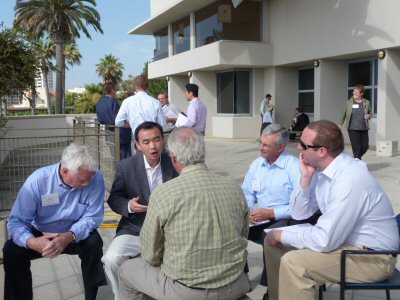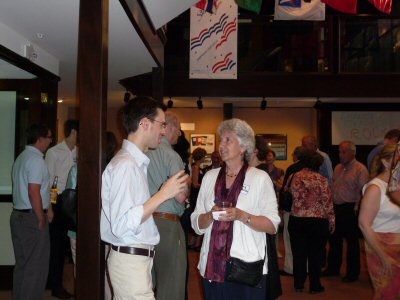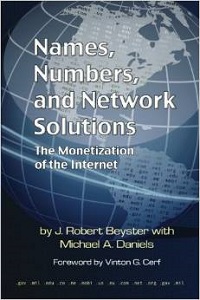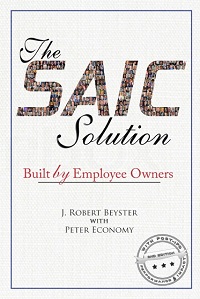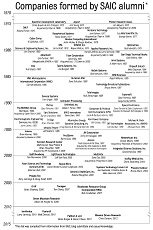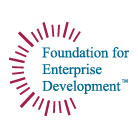Beyster Fellowship Symposium Recap
Closed Published by Dr. Beyster July 30th, 2009 in Employee Ownership, Entrepreneurship, FED.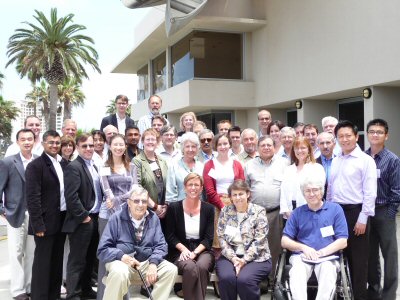
Last Wednesday and Thursday the FED sponsored its Beyster Fellowship Symposium. The symposium was held in a conference room at the Museum of Contemporary Art San Diego in La Jolla overlooking the ocean. The participants were people who had been conducting research on employee ownership sponsored by the FED. This was an opportunity to tell us how they were doing. I attended most of the sessions and found them to be very stimulating.
The first presentation I attended was conducted by Doug Kruse of Rutgers University, who gave an overview of recent results of a study of hundreds of leading companies. He spoke on the topic of shared capitalism and described the many ways that this objective could be successfully established within organizations. One of the observations from his research is that there is evidence that the companies that have employee ownership and related practices had improved their performance in terms of employee turnover. Among the 100 Best Companies to Work For in America, the consensus of this new research was that employee ownership made a big difference. Looking around the country, those shareholder rights groups who objected were usually opposed because of the dilution caused as a result of widespread employee ownership. But among leading technology companies with broad-based employee ownership it seems that most shareholder participants were quite happy with the impact employee ownership had.
In a large proportion of the 100 Best Companies to Work For, there was at least some amount of shared capitalism. I asked a question about the impact of Sarbanes-Oxley on employee-owned companies, particularly increased costs due to the additional paperwork. The answer came back that the intentions of Sarbanes-Oxley are good, but the recommended changes in the governance and operating practices of companies are quite tedious. Only the larger companies that are public but still having some form of shared capitalism could really afford to do it. The smaller companies to which this law was being applied were subject to very high costs which most had a hard time affording. It’s clear to me that this law needs to be changed and one shoe doesn’t fit all. Nonpublic companies should be able to avoid these expenses. Whether Congress will ever get around to changing the law I don’t know, but it’s clear that it is stifling innovation and creativity in this country with its high costs. Various researchers are thinking about surveys on employee ownership. I suggested that they add to this list a question on the impact of Sarbanes-Oxley, which I hope they will do.
The San Diego State University team presented next, explaining their research on employee ownership sponsored by the FED. They used previously defined survey questions from Rutgers and other sources, as well as developed new questions. They received responses from 103 life sciences companies in San Diego on how all forms of employee ownership — including monetary incentives — has worked for them. According to the early findings, 67% offered stock options, 31% offered stock grants, and 11% adopted ESPP, and 4% ESOPs. Over 75% of managers, scientists and engineers as well as others (including non-managers and non-scientists and engineers) have 401(k) programs with these companies. They also gained details on the extent of profit and gain sharing. The startling result was that employee ownership actually seemed to increase employee turnover. A closer look is beginning on this finding. The thought was that once a company became successful, some employees decided to cash out. My experience is that you have to talk a lot to convince some people to stay when they suddenly have a lot of money and they may not like their boss.
Joe Hsueh from MIT Sloan was next and he had developed what he called a management flight simulator. This model allowed companies to introduce their business plan into the flight simulator and figure out in advance with the parameters being whether the company would be successful. This is a very useful tool and a product from the FED-sponsored research that all participants will be able to use to help the companies which they work with.
On Thursday Tony Mathews of the Beyster Institute talked about the progress he and his team are making on their research. They have a five-constituent model that they use to interview and work with employee-owned companies. Their customers include business leaders who need advice on running companies, professors and students of business, entrepreneurs, finance leaders, public policy leaders, and others. They consult with 60 companies a year, with ESOPs being the main focus. Courses include equity compensation and motivational training, and Web teleconferences are used for distance learning. The mission of the Beyster Institute is to promote employee ownership and to get it more widely distributed. Tony is also very interested in the impact of employee ownership on the community and is planning to include information on that subject in his future research.
John Logue from Kent State University runs the Ohio Employee Ownership Center, which has been in existence for some 30 years. The 80 companies he works with are primarily in the manufacturing and construction industries, with annual sales of up to $3 billion. John simply wants to know what works and what doesn’t work in employee ownership. He’s done five separate studies on ESOP companies, comparing them with non-ESOP companies. An ESOP is generally thought to be a way of getting rich slowly because of the formula for awarding ownership and cashing out the recipient after a long period of time. John found that ESOPs where the employees participated in management of the company were quite successful, and that employee participation in management was encouraged at 80% of the ESOPs surveyed.
The last presentation I attended was given by Joseph Blasi of Rutgers on the national research data infrastructure for employee ownership. As always, Joe did a very good job and his talk provided an exciting conclusion to the week’s events.
